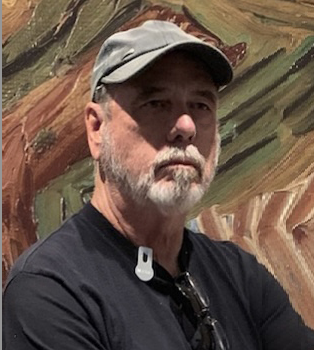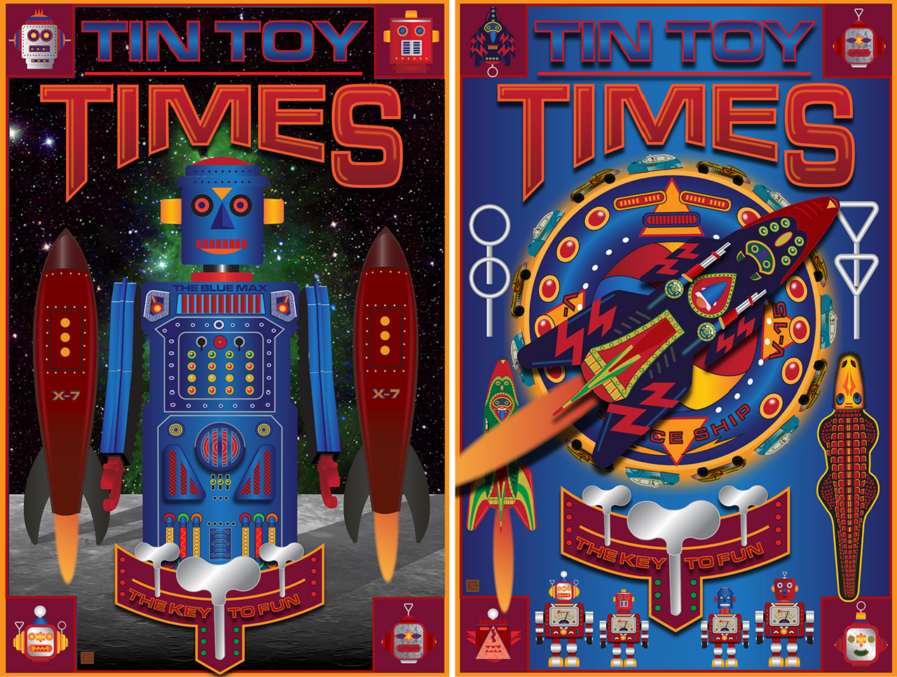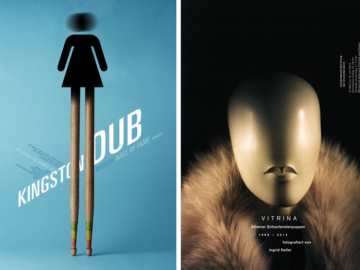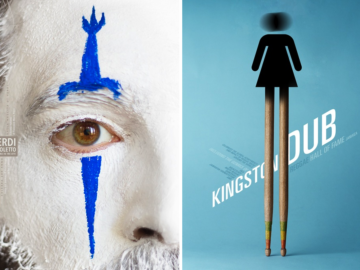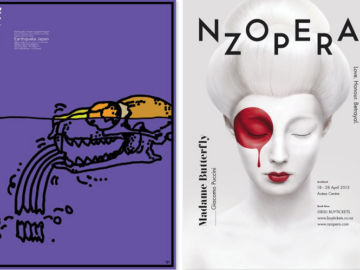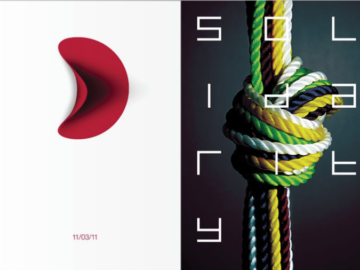Tin toys aren’t just relics—they’re time machines. With “Tin Toy Times,” Steve Collier of CollierGraphica breathes new life into the whimsical world of wind-up wonders from the 1920s to the 1960s. These posters don’t just showcase vintage collectibles; they transport us back to the thrill of childhood adventures, where a twist of a key sent imaginations soaring. Each design bursts with color, nostalgia, and a love for the handmade. It’s not just a nod to the past—it’s a call to dream again.
By: Steve Collier, Designer, CollierGraphica
The series of posters I produced was designed to capture the viewers’ interest in remembering and recalling the great times spent engaging with and imagining we were part of the imaginary world they conveyed. It was a dream, a fantasy world that held one’s interest and imagination, whether speeding in a racing event or traveling in a space vehicle to faraway places one only dreams of.
The catalyst and interest in these toys were due to a friend who owned a resale shop and had a collection of tin toys. I contacted him, acquired the collection, and began engaging in the same playful and energetic interest I remember as a kid. My creative juices started flowing.
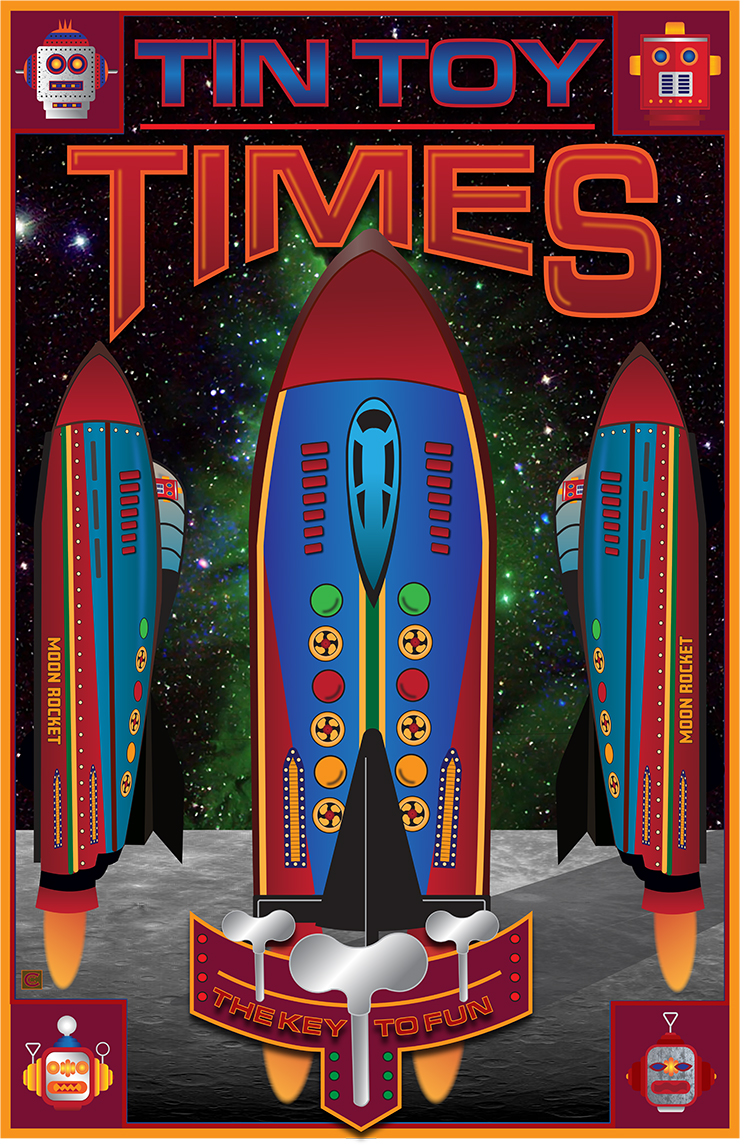
Considering how I could convey the same excitement I was experiencing to an audience with the same interest levels and beyond, I began sketching out approaches and concepts for presenting to potentially interested audiences. I concluded that the best way to communicate the subject was through a poster approach with a large format and the visual impact it could provide. Unlike most of my design approaches in the past based on “less is more,” but in this case, it necessitated “more,” the posters justified the busy approach with merchandise, creating a “horn of plenty” type atmosphere as if one were going into a store to purchase these prize possessions, exciting. I remember this excitement as a kid going to a Saturday matinee and couldn’t wait to get out of the movie and head to the 5¢ and 10¢ store. Wow! How could one not be drawn to this subject filled with interesting objects, shapes, colors, and style, embodying an end product that captures one’s imagination and is actually happening in this period of our times with robotics and space crafts being launched? It was an easy process, sparking creative ideas that resulted in the series.
The creative process has always been miraculous and very interesting throughout all my years, and this especially fell into place. I followed the lead of the process. Almost impossible to stop the process. Sometimes, all one needs to do is just listen to the subject, which will take you where you need to go. The headline “Tin Toy Times” seemed natural and would provide a way to attract a broader interest level. It had a nice bounce when spoken, and at the same time, it suggested a possibility of publication if that came about. Producing the illustrations was a bigger task than I imagined, as I had no idea how many tin toys I would feature and how to bring them to life. These were probably the most illustrations I have produced for one project ever. All engaging and enjoyable.
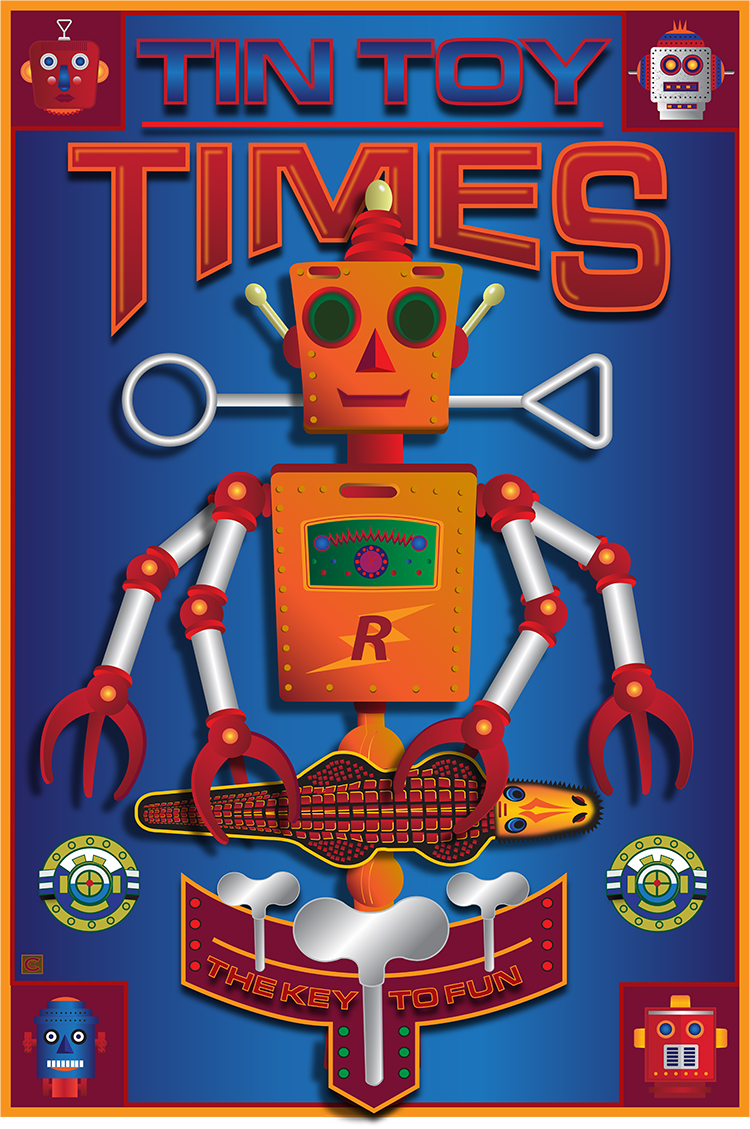
What innovative techniques or tools were used to achieve the final results? The motivation was the love of the graphic arts.
The project was a self-assignment, as no craze, trend, or phase justified financial opportunities for the marketplace. I could not resist. It was published on social media, with friends in the graphics community, and obviously Graphis. I was delighted that the graphics community recognized it.
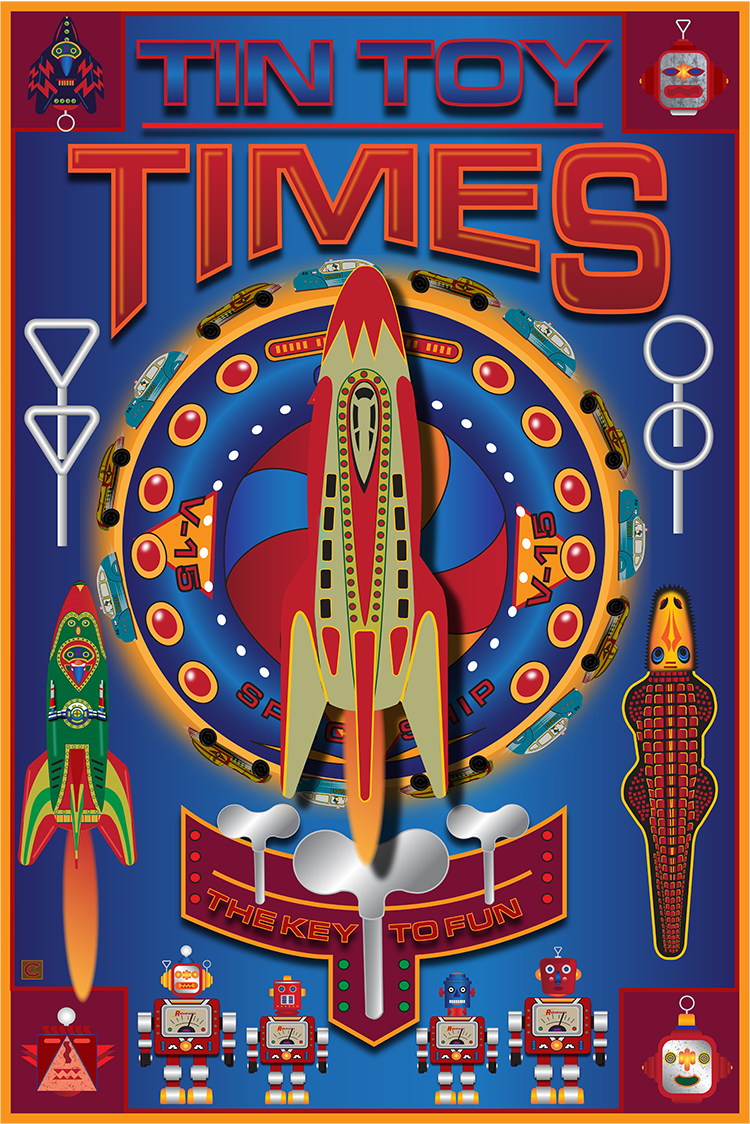
With this and many other projects I have been involved in, the sense of being engaged from one’s heart and soul in the creative process was fulfilling enough to know that experience drives my desire to continue to be a messenger of the graphic arts now and in the future. To further heighten my involvement, being honored by the graphic arts community, especially Graphis, is very special.
When I entered college, I planned to devote my interest to dentistry. After reflecting on the courses required: maths, sciences, chemistry, etc., I realized that my genuine interest was art. I dropped out of dentistry and relocated to a different college where communications arts was offered, and I have never looked back since. I realized that it came from a deeper place of involvement and commitment, a place that drove me from one day to the next. I had no idea what I was getting involved in, but I knew that it was right. I followed my instincts and my levels of interest, and to this day, I believe it was love at first site. And still, to this day, the same exists 62 years later. That would be my best advice if a student were to ask me, “What profession would I recommend”? Answer the one you are in love with. Why? Because there are pros and cons to all professions, and if you are not truly dedicated and devoted to it, when the cons come about, and they will, you just might not be able to break through the walls to get to the pros. Choosing a profession is like a marriage.
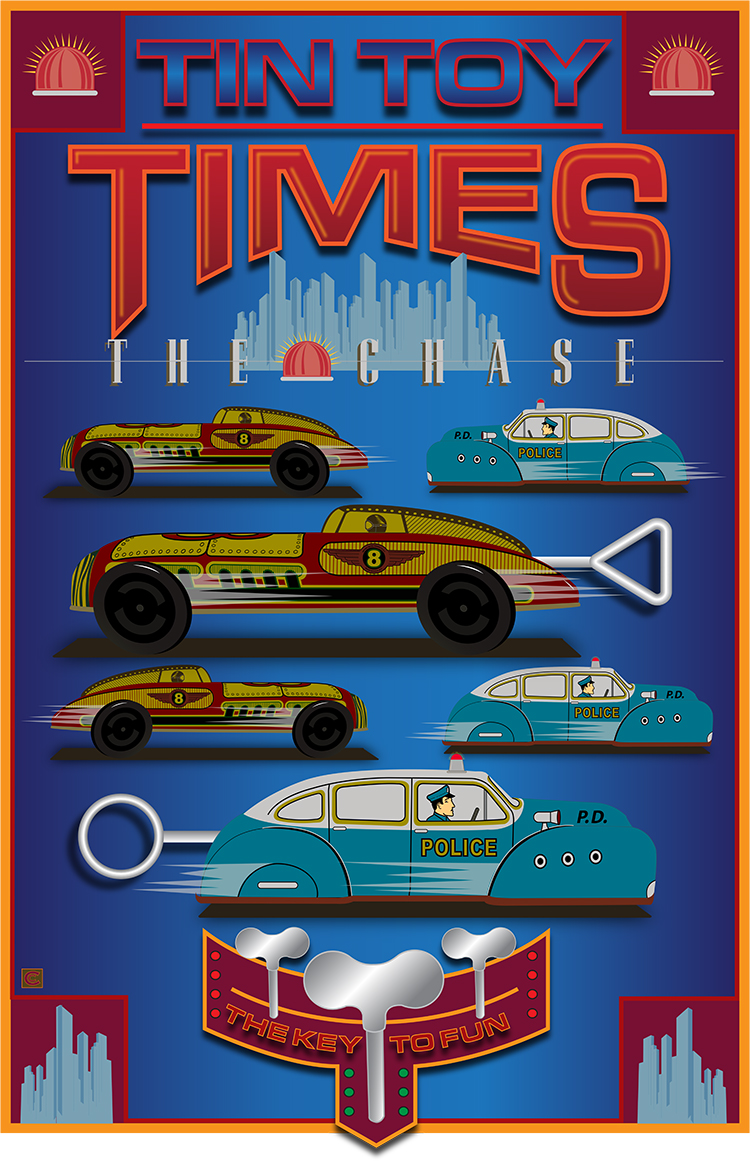
My last job in this wonderful career was as senior art director for a start-up company in Seattle, Washington. The company, GalleryPlayer, was bringing to HD screens a collection of masterpieces from the likes of Ansel Adams, Cézanne, Modigliani, Monet, Renoir, and Van Gogh filling your blank screen when not in use during regular viewing with the absolute best digital art and photography available on the market today with the best content providers in the world, LIFE, National Geographic, George Eastman House, The New York Public Library, The New York Times, The Metropolitan Museum, Barnes Foundation, Andy Warhol Foundation, Art Resources to mention a few. I was responsible for creating and producing promotional materials, including the company’s packaging and its products. It was exciting and rewarding. After three and a half years with the company, it ended because we could not gain enough traction to satisfy the investors with potential commercial/ retail audiences. I moved back to Houston, Texas, and retired.
As to the future of my field, I am troubled; technology has brought some wonderful aspects to aid in creating and producing artwork, but in another realm, it has sidestepped a tremendous number of very talented artists, designers, illustrators, photographers, printers, paper suppliers, etc. that I worked with over the years in my profession. As technology advanced, many of my artist friends could not compete and went out of business due to technological changes. Luckily, I retired at the appropriate time and was not as affected. It has left out some extremely great hands-on craftsmen of the trade. Times have changed even more today. With AI as hopefully beneficial as the possibilities are, it is still taking its toll in many areas of the art community. If one creates a piece of art, who is the author? Someone to input words, AI makes the final art. It’s miraculous, but whose name is credited with the final product? And where is the “creative process” that is so important?
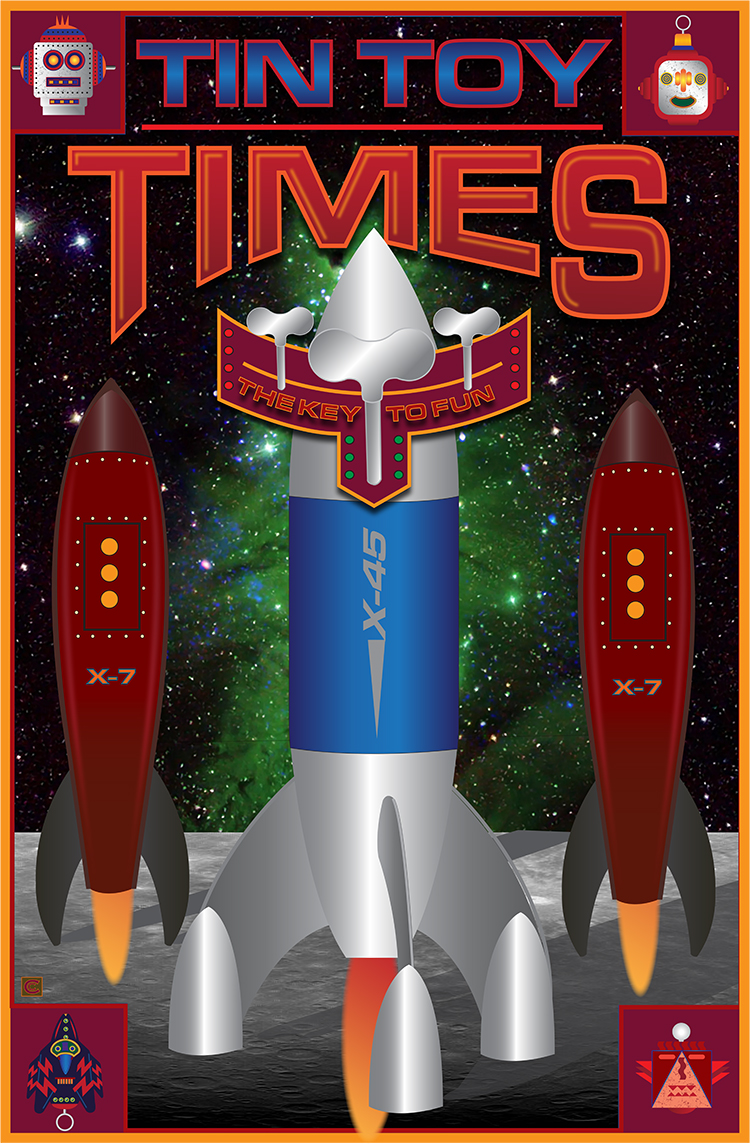
CollierGraphica is about creating effective communication materials through conceptual and visual means and directing those efforts and materials through applicable marketing avenues in conjunction with a company’s mission and marketing goals to build and establish a presence resulting in a positive and memorable experience of a company’s products and/or services.
We have been involved in many facets of developing corporate identities and marketing materials for small and large companies. Careful planning, innovative solutions, par excellence execution, and pinpoint identification of marketing avenues are vital components in positioning a company for success. Review our work; you’ll be spinning with the results.
